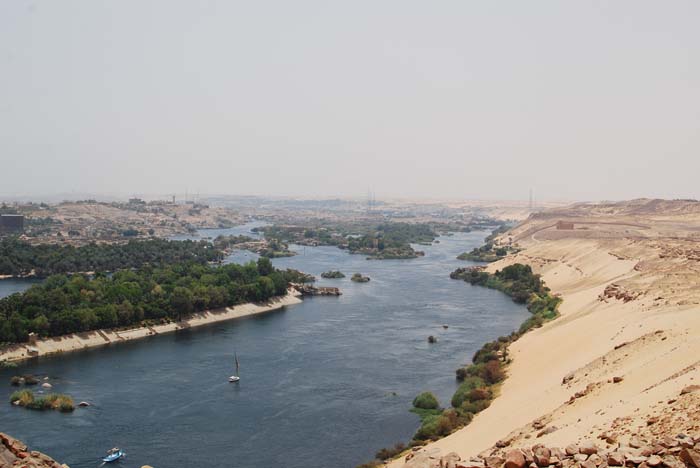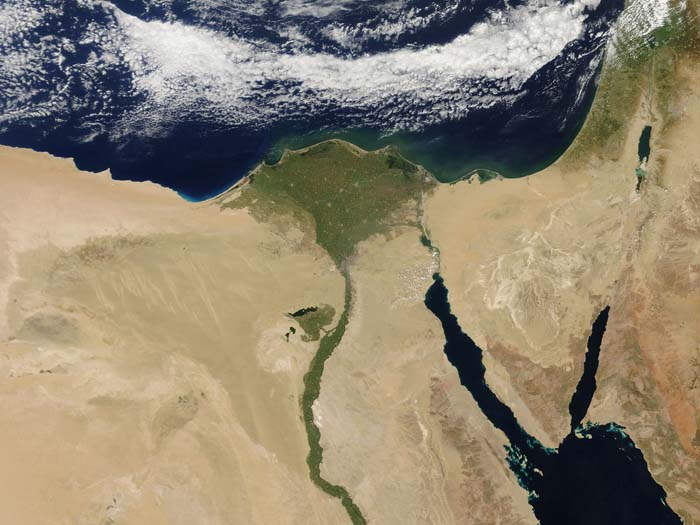The Nile River has certainly played a critical role in the history of ancient Egypt. Famous as the longest river in the world, the river got its name from the Greek word Neilos, which means valley. The Nile floods the lands in Egypt, leaving behind black sediment. That’s why the ancient Egyptians named the river Ar, meaning black.
The story of the Nile River begins not in the lush coastal lagoons of its Mediterranean mouth, nor at its headwaters high in the cloud forests of Rwanda, but in the Western Desert of Egypt.
Here, there is no Nile. There is no water. It is a Martian landscape, inhabitable except for a few scattered oases. It is a Saharan playground for dust storms and locusts, where shovel-snouted lizards dance on two feet to avoid the scorching sands of mid-day.
This is Egypt without the Nile.
Small wonder, then, that the Ancient Egyptians prized and venerated the Nile River. It was their umbilical cord. Even today, a common Egyptian blessing is: “May you always drink from the Nile.” From its cooling waters came perch fish bigger than the fisherman. From its loamy riverbanks came mud used for bricks and papyrus for books and boats.
Every year, when the Nile River flooded and saturated the parched land in water and life-giving silt, the Egyptian farmers thanked the god Hapy and began their calendar anew.

View of the Nile and the desert banks
A Satellite View of the Nile River
Were you to hitchhike a ride on a satellite, you could see the Nile River in its entirety. For almost 4,250 miles the While Nile snakes through nine countries, from the Delta region of Lower Egypt all the way to Lake Victoria, the biggest of the African Great Lakes.
The Blue Nile begins at Lake Tana, Ethiopia, and joins the White Nile south of Egypt in Khartoum, Sudan. Together, they make up the longest river in the world, the blue thread that binds Africa.
When you think of Ancient Egypt, you probably imagine the Great Sphinx and the limestone pyramids of the Giza Plateau. You picture the towering obelisks of Memphis and the ochre domes of Cairo. These cities were the nerve center of Ancient Egypt. They lay just 20 miles South of where the Nile cleaves into the many channels and canals of the fertile Nile Delta.

Satellite view of the Nile River
The fan-shaped Delta is flat as a pancake and green as a leprechaun. At its farthest reaches sat the great port city of Alexandria, home to the lighthouse Pharos, one of the Seven Wonders of the Ancient World. Beyond the Nile Delta is nothing but the salt solution of the Mediterranean and past that, Europe.
At the opposite end of Egypt, where the Nile snakes into the country, was the gateway city of the country: Aswan. It was small, hot, a garrison town for the Egyptian armies.





































